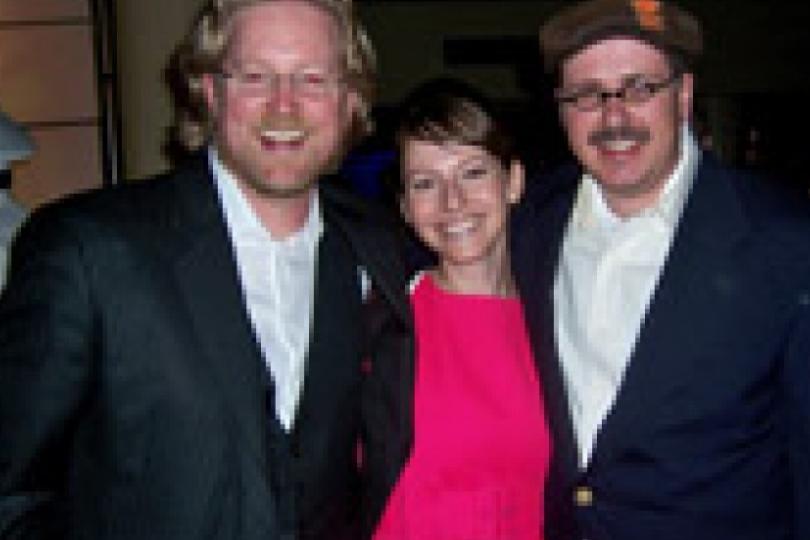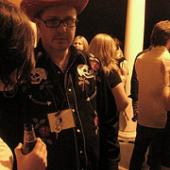It’s been a long time since Jayne Blanchard. Those of you with long memories might recall the Pioneer Press critic, especially if she cast her notoriously sharp eyes on a play you were in. You may not, however, remember the circumstances of her termination from the Pioneer Press, which were complicated and eventually involved a sexual harassment lawsuit. I won’t delve into the full details, although some of them are available in
this City Pages story from 1997. Suffice it to say, a large number of the reasons given for her termination involved a conflict of interests: she had produced a play and then written about the experience.
It’s always been hard to maintain the wall between critic and artist. Although we typically think of them as very different animals, the truth is that there is a long history of playwrights working as arts reviewers, including Oscar Wilde and George Bernard Shaw. Even when this hasn’t been the case, it’s hard for there not to be a chumminess between critic and performer or artist -- it’s a small beat, and you see the same people over and over again. And theater people tend to be pretty friendly and attractive, so it’s awfully hard to fasten a wall between artist and critic and have it stick.
But nowadays, there hardly seems to be a wall at all. Sure, some print newspapers will try to maintain the old standards, insisting that the newspaper pay for tickets, and some critics will try to force distance between themselves and their subjects. But there aren’t many of these left. The budgets for arts criticism have shrunk, although interest in the subject probably remains about the same. And so even newspapers have found themselves hiring stringers and freelancers who actually work in the field they are writing about. Local actor/director Zack Curtis, as an example, used to write about theater for The Examiner online. Bill Corbett has written about theater for City Pages. Director John Townsend has expanded his longtime gig as a theater critic at Lavender Magazine to include freelance work with the dailies. Playwright and actress Sheila Regan regularly writes about the arts for a variety of local publications.
And things have gotten less formal on the critical side as well. Daily Planet arts editor Jay Gabler is about as chummy with his subjects as it is humanly possible to be. 3-Minute Egg producer Matt Peiken likewise has friends throughout the performing arts community.
And there’s me, of course, whose always had one foot in both world, having worked as an arts critic for almost precisely the same amount of time I have worked as a playwright and performer. And, at this moment, I’d say most of my friends are members of the performing arts world.
Pitfalls and benefits
I’d like to take a moment now to discuss some of the benefits of this, as well as some of its potential pitfalls. We’ll start with the pitfalls, which are easiest to discuss:
This sort of critic/artist cross pollination can lead to overwhelming conflicts of interests. It does not serve the needs of an artist or an audience to have a critic who is primarily a cheerleader for the local arts community. One of the traditional roles of the critic is to act as an entirely impartial respondent to a piece of art. We may not agree with their opinion, but we know them to be thoroughly scrupulous in expressing that opinion. And, without an impartial response, there is a risk of criticism just becoming a wing of the promotions department of an arts organization. And even the appearance of a conflict-of-interests has historically led to charges of impartiality, which is why some critics will not see their subjects on a social basis.
I’ve wrestled with this. It’s especially poignant now, as I tend to prefer only to write about subjects that interest me, and so it will be pretty rare that I produce a really scabrous review. As I figure it, audiences have no trouble steering clear of bad art, and there is so much interesting art out there that I prefer to point them in that direction. And my relationship with the local performance art community is so thoroughly muddied that I must includes extended full-disclosures in every piece I write. I have been fortunate to land a gig where this isn’t a problem, as my column for MinnPost is built around a conversational, insider’s look at the arts. But, as Mencken once said, in order to maintain credibility as a critic, sometimes you have to raise the black flag and start slitting throats. This can be very, very difficult to do when you’re writing about people you care about.
Additionally, if you’re a theater person who has gone into writing criticism, there’s the possibility of making enemies. “I feel I’ve burned quite a few bridges by writing snarky reviews about plays done by theater companies I at one time would have liked to work with,” Sheila Regan told me. “Being a theater writer has pretty much been disastrous for my acting career, but at the same time I’m really more interested in creating independent, experimental work (as opposed to acting professionally in mainstage productions), so I will continue to do that.” Local creators of the arts can be a pretty forgiving group, but forgiveness only goes so far.
Despite this, I think this breakdown between critic and artist was inevitable, and is, ultimately, a net plus. The biggest benefit is that arts writing is at its best when written by somebody who actually knows about the arts. There’s a long and sullied history in the press of sports writers and beat reporters being pressed into arts writing because nobody else will do it. They’ve never participated in the making of a performance, and so don’t know what goes into it. And they often don’t have much of an education on what they’re reviewing. Notoriously, an Omaha critic once left “Waiting for Godot” during intermission, not knowing there was a second act. He wrote a piece about how Beckett’s play has nothing to say to modern audiences. And, who knows, maybe he was right. I like Beckett, but I also like “Auntie Mame,” and that’s a play that genuinely has nothing to offer modern audiences. But his case would have been more credible had he stuck it out for the second act.
Two schools of criticism
I suppose there are two schools of criticism. The first, which has historically been the preferred one, is that the critic is the audience’s representative at a play. This critic need know no more than a typical audience member might, and can therefore fairly represent the audience’s experience of the play. This critic doesn’t need to know anything more than what happens between the moment a curtain rises and when it falls. And this is certainly fine for popular arts. Anything extra you know about “Mama Mia,” as an example, may be too much. But the arts have never benefited from an ignorant audience, and 20th and 21st century art, in particular, has demanded an audience that is willing to self-educate. The fine arts, for example, no longer see a single painting as being a complete and discrete piece. It helps to know the artist’s philosophy, or the genre they are working in, or if the piece is part of a larger collection. In this world, the role of a critic is, in part, to act as a sort of tour guide to an audience member, providing context for a piece of art.
For this sort of critic, all sorts of things are important beyond what occurs between the rise and fall of a curtain. The process that goes into making a piece of art becomes very interesting. The social world of the artist becomes quite important. A larger knowledge of genre, or arts philosophy, of artistic movements, becomes vital. And this is a very hard thing for a former sportswriter to just jump into. If you want this “tour-guide” sort of critic, it helps to find somebody whose background is in the arts. They generally can communicate pretty well in writing, as we at MinnesotaPlaylist have repeatedly demonstrated. After all, artists are often well-educated, and, especially in the performing arts, communicating clearly and well is an essential skill.
I suspect we’re going to see a lot more critic/artists down the road as print newspapers keep tightening their budgets and less-traditional online news sources start to come into their own. My suspicion is that the end result of this will be a better-educated and more adventurous audience. I hope this will be the case, anyway. There is, of course, a risk that criticism will become a form of advertising, with critics writing only to promote their own work or their friend’s work. God knows this is a real possibility: If there is one thing the Internet has proven, it is that it is quite good making spam.
That would be a pity. Because we are filling the ranks of arts critics with people who know about the arts, love them, and are skilled at communicating their nuances. This should lead to a golden age of arts writing, instead of a golden age of self-promotion.





